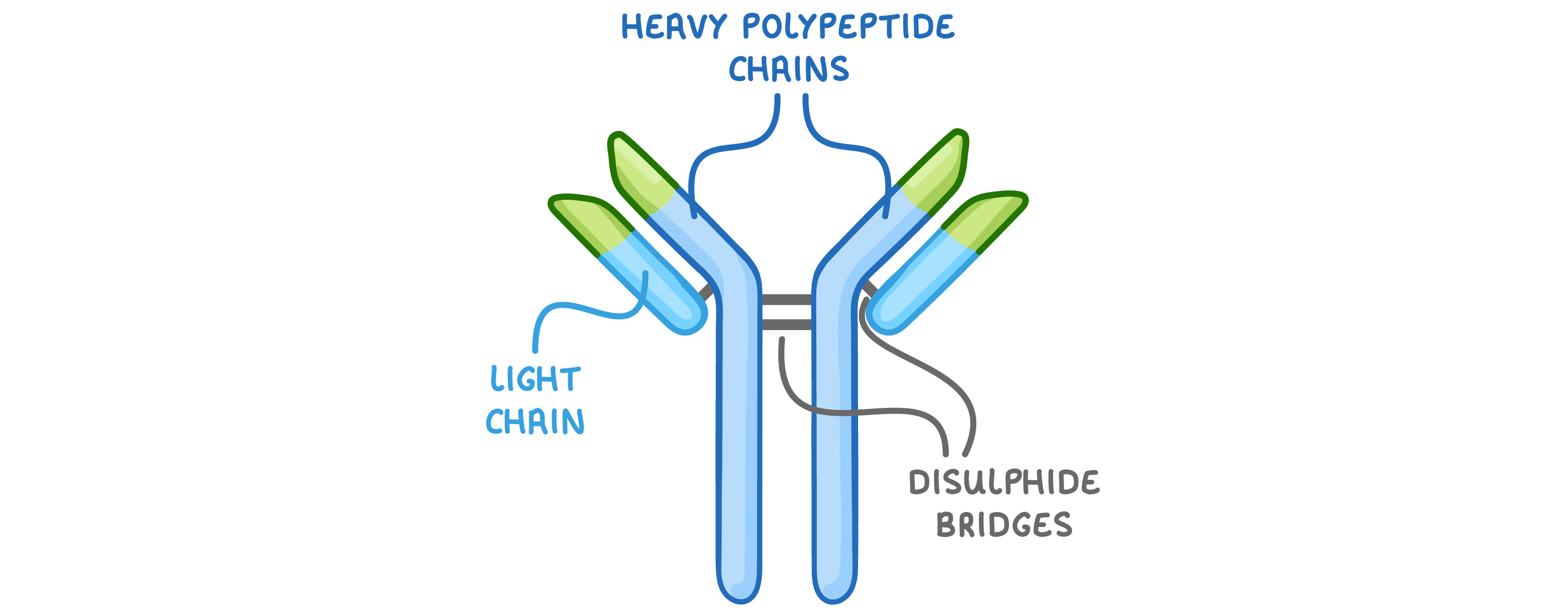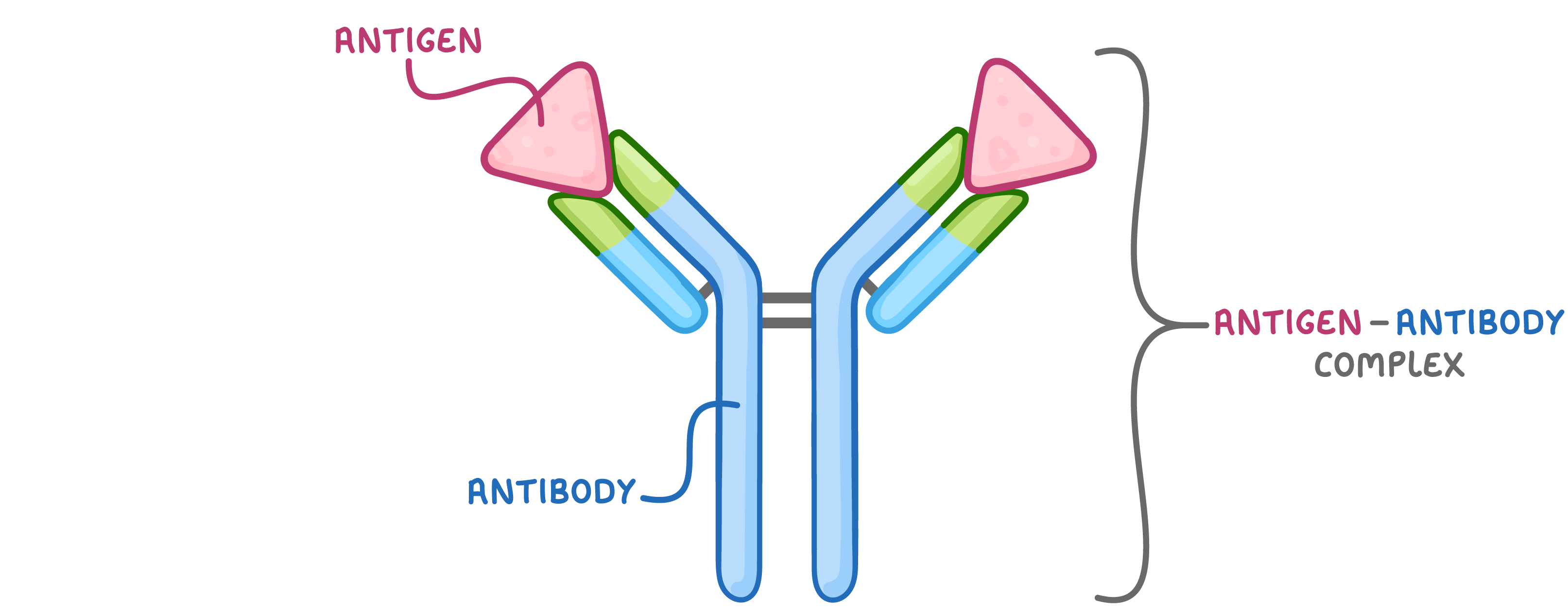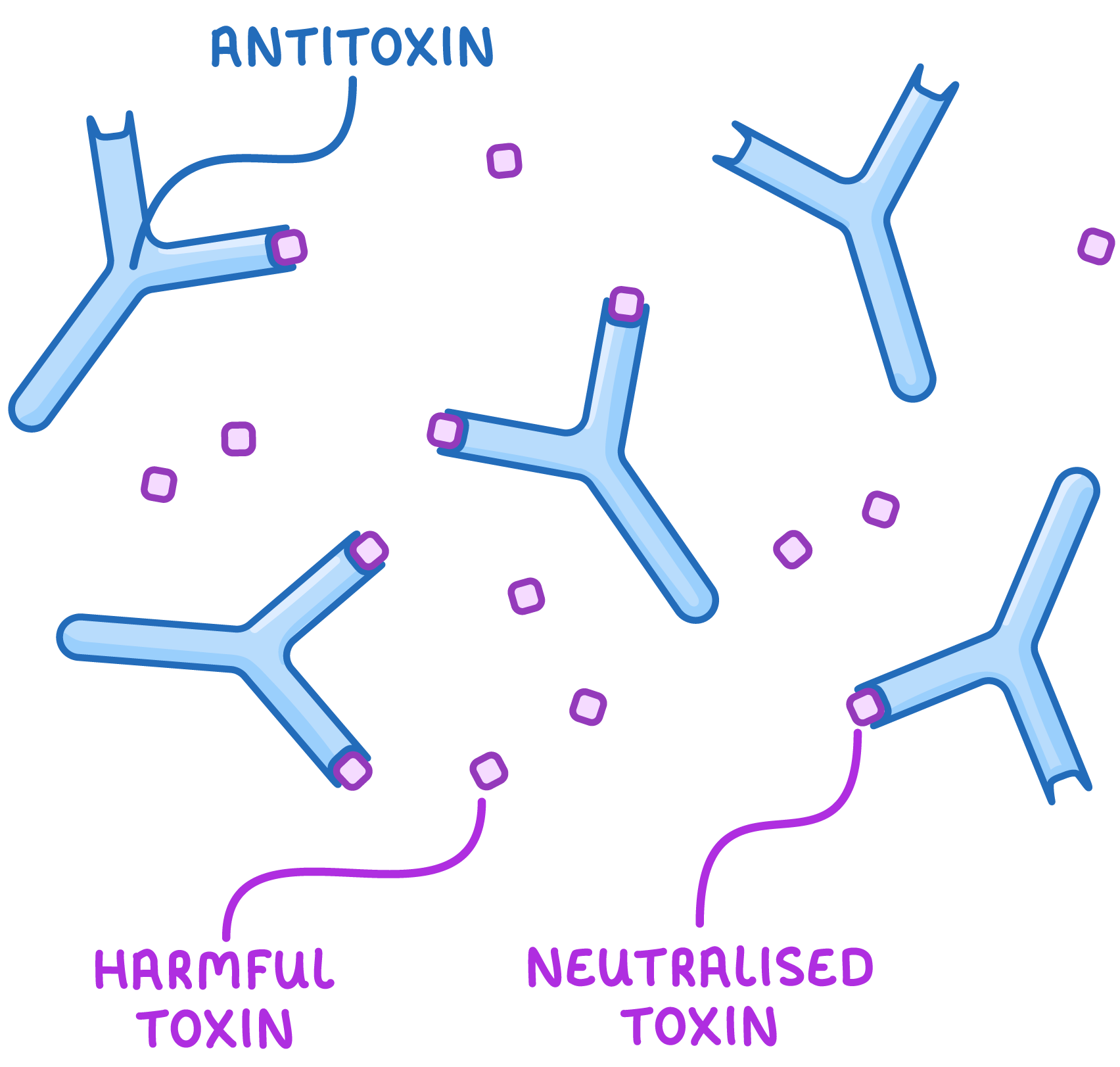Antibodies
This lesson covers:
- The structure of antibodies
- The function of antibodies
Antibody structure In the previous lesson, we saw that the humoral response involves the production of antibodies to help destroy pathogens. Antibodies are Y-shaped glycoproteins made up of four polypeptide chains, two heavy chains, and two light chains. |
 |
The polypeptide chains are held together via disulphide bridges. Antibodies are made up of various regions:
|
Antibody functions The main function of antibodies is to bind to specific antigens on a pathogen's surface. |
 |
Each antibody has a unique binding site (in the variable region) that fits onto a specific antigen. When an antibody binds to an antigen, they form an antigen-antibody complex. Antibodies carry out three roles to help destroy pathogens:
|
Agglutination of pathogens  Antibodies act as agglutinins, causing pathogens to clump together. This makes it easier for phagocytes to locate pathogens and allows them to engulf a number of pathogens at once. |
Neutralisation of toxins  Antibodies can act as antitoxins where they bind to toxins produced by pathogens. This binding neutralises (inactivates) the toxins to prevent them from damaging body cells. |
Preventing pathogens from binding to cells When antibodies bind to a pathogen's antigens, they block cell-surface receptors needed to bind to host cells. This means that the pathogen cannot bind to or invade host cells. |